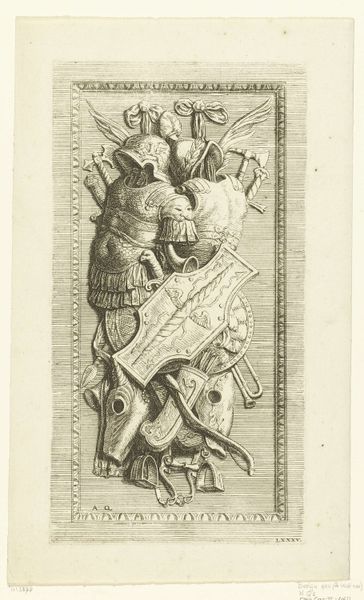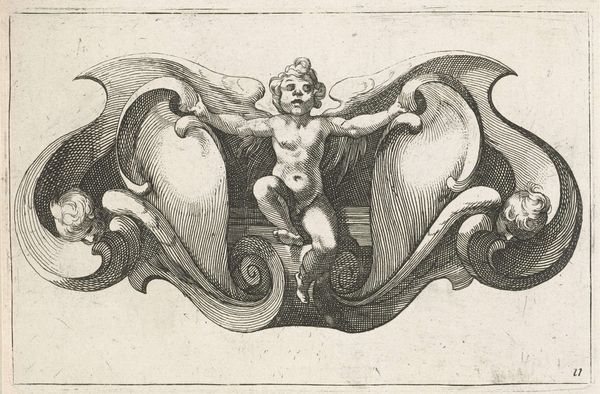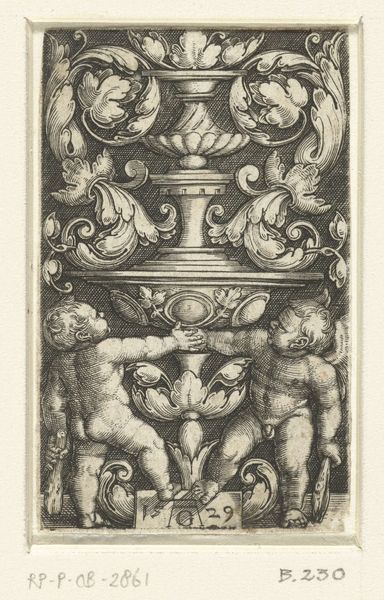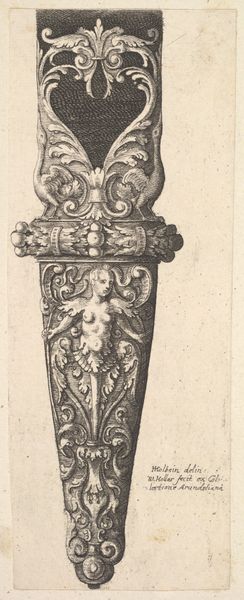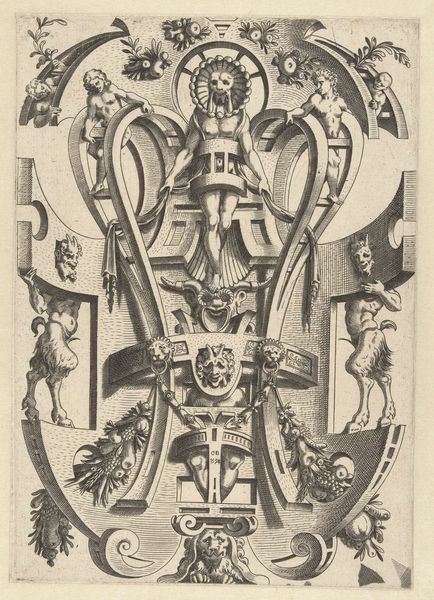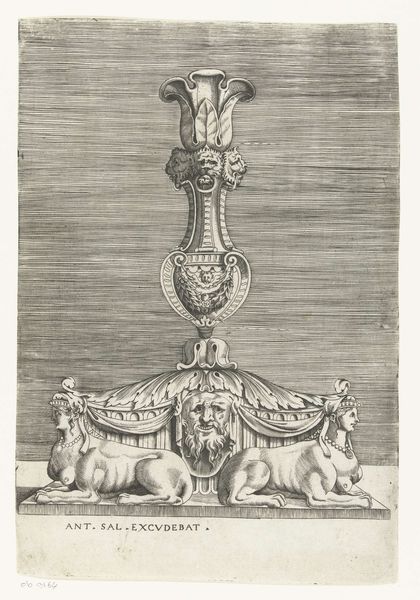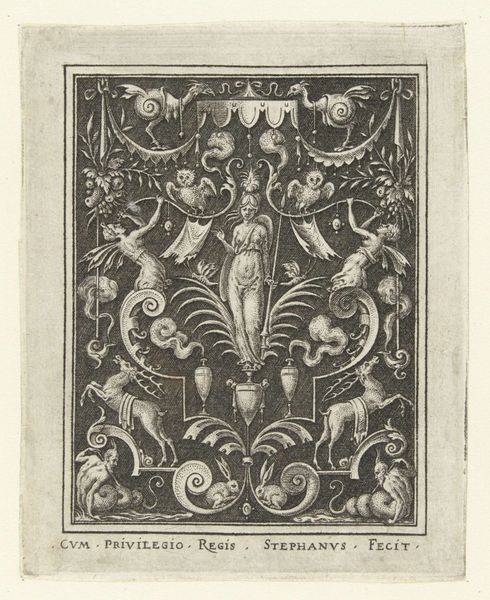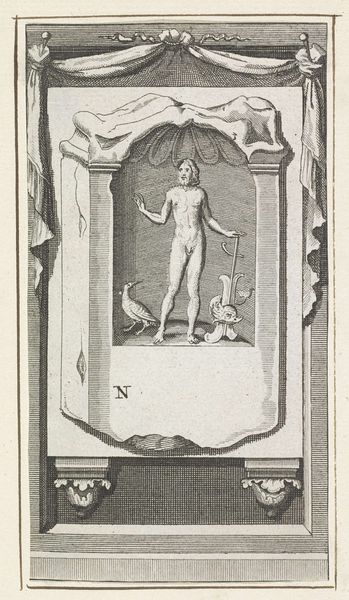
print, sculpture, engraving
#
portrait
# print
#
greek-and-roman-art
#
old engraving style
#
classical-realism
#
mannerism
#
figuration
#
form
#
sculpture
#
line
#
portrait drawing
#
history-painting
#
academic-art
#
engraving
Dimensions: height 166 mm, width 78 mm, width 54 mm
Copyright: Rijks Museum: Open Domain
Curator: This engraving, dating roughly from 1516 to 1565, presents us with an intriguing example of what's titled "Herme in rolwerk." It's an anonymous piece housed here at the Rijksmuseum. Editor: Striking, isn’t it? The contrasting textures, the smooth human form against those rigid, almost architectural shapes… It gives me a real sense of tension. Curator: The "herme" itself—the figure—is deeply rooted in classical traditions, echoing ancient Greek and Roman sculpture. These figures often appeared in public spaces, serving as boundary markers or symbols of civic identity. But how does the rolwerk play into that public role? Editor: For me, the rolwerk serves as a kind of frame, doesn’t it? It traps him; accentuates the statue-like quality of his presentation by enclosing and decorating its surrounding space with austere lines and symmetry. I’m interested in its pattern. Curator: Exactly, it’s the formal aspects. Notice how the figure is deliberately placed. The tension lies between the classical, idealized human form and this rigid structure; which might suggest something about Mannerist anxieties surrounding the loss of classicism within social structures. Editor: The figure seems self-contained; a product of self-governed principles of classical composition. While this order does create something stable and familiar, there is this bizarre integration of body and architecture. The body merges with the column! Curator: A purposeful melding, suggesting perhaps that true strength comes not just from physical power but from cultural foundations. It might speak volumes to an era grappling with power, legacy, and the intersection of the state and the individual. Editor: Well, I hadn’t considered that interplay of the body, power, and its position in this way; your insight completely transforms my experience of the piece. Curator: And your perspectives help us to understand how period engravings of architectural renderings worked in public collections during shifting views about power and governance.
Comments
No comments
Be the first to comment and join the conversation on the ultimate creative platform.


